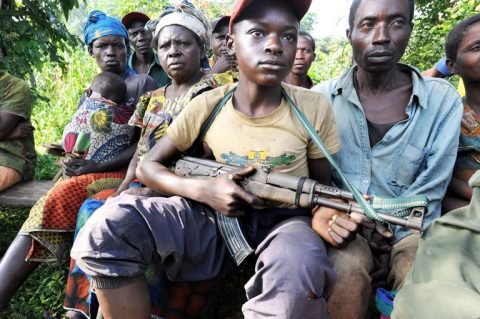
The Heart of the Hutu-Tutsi Conflict
Today, 21years ago, December 27, 1996 – A genocide trial began concerning the killing of an estimated 800,000 Tutsis in Rwanda. In 1994, a bloody civil war had broken out between the two main ethnic groups, the Hutu and the Tutsi.
According to many scholars, Hutus first settled in the Great Lakes region of Central Africa between five hundred and one thousand BC. Generally speaking, Hutus were an agricultural people who lived in large family groups.
The Tutsis, also known as Watutsis, were a nomadic people who began arriving in the Great Lakes region from Ethiopia some four hundred years ago. Eventually, the Tutsis settled amongst the Hutus – adopting their language, beliefs and customs.
But economic differences between the groups soon began to form. The Tutsis as cattle-herders were often in a position of economic dominance to the soil-tilling Hutus. That is not to say that all Tutsis were wealthy and all Hutus were poor, but in many areas, like Rwanda, the minority Tutsis ruled the Hutus.
According to some historians, like Congolese Professor George Izangola, the only difference between the two groups were economic, rather than ethnic. In a 1996 interview with Charlayne Hunter Gault, Professor Izangola explained:
“In Rwanda, the Tutsi and the Hutu are the same people. They are all people–large grouping or communities which go from seven regions of Cameroon to Uganda–all the way to South Africa, in the same culture,” Izangola said. “People used to be Tutsi or Hutu, depending on the proximity to the king. If you were close to the king, you owned wealth, you owned a lot of cattle, you are a Tutsi. If you are far away from the king, you are a cultivator, you don’t own much cattle, you are a Hutu.”
Colonial rule, which began in the late 19th Century, did little to bring the groups together. The Belgians, who ruled what would later become Rwanda and Burundi, forced Hutus and Tutsis to carry ethnic identity cards. The colonial administrators further exacerbated divisions by only allowed Tutsis to attain higher education and hold positions of power.
The modern conflict.
Following independence in 1962, Ruanda-Urundi split into two countries: Rwanda and Burundi. In Rwanda, the Hutu majority lashed out at the minority Tutsis – killing thousands and forcing hundreds of thousands to flee to neighboring Uganda. In Burundi, the minority Tutsis maintained their control of the military and government through a campaign of violence against the Hutus. Although they lost multi-party elections in 1993, two assassinations and a military coup have allowed the Tutsis to remain in power.
When Yoweri Museveni, a rebel leader of Tutsi descent, seized power in Uganda in 1986, it was largely through the assistance of Rwandan Tutsis. With a power base in Uganda, the Rwandan Tutsis formed the Rwandan Patriotic Front and began attacks against the Hutu-led government. After years of fighting, the Rwandan government launched a genocidal campaign against Tutsis living in Rwanda. According to reports, over 800,000 people were slaughtered over a period of 100 days.
Eventually, the tide turned against the Hutus and the Rwanda Patriotic Front defeated the Rwandan Army, forcing hundreds of thousands to flee, mostly to Tanzania and Zaire.
From refugee camps in Zaire, Hutus continued the fighting by launching cross-border raids on Tutsis and moderate Hutus living in Rwanda and Uganda. When Zaire’s government, led by President Mobuto, was unable or unwilling to assert control over his eastern frontier, the Tutsi governments of Uganda, Rwanda and Burundi backed a rebellion that toppled the state. The rebel leader they supported, Laurent Kabila, renamed Zaire the Democratic Republic of the Congo. When the Hutu raids continued, the Tutsi-led states encouraged a second rebellion against Kabila.
With Tutsi rebels continuing to fight in the former Zaire and Hutus waging guerilla battles in Uganda, Rwanda and Burundi, the ethnic strife that sparked the slaughters in Rwanda continue to infect the region.




